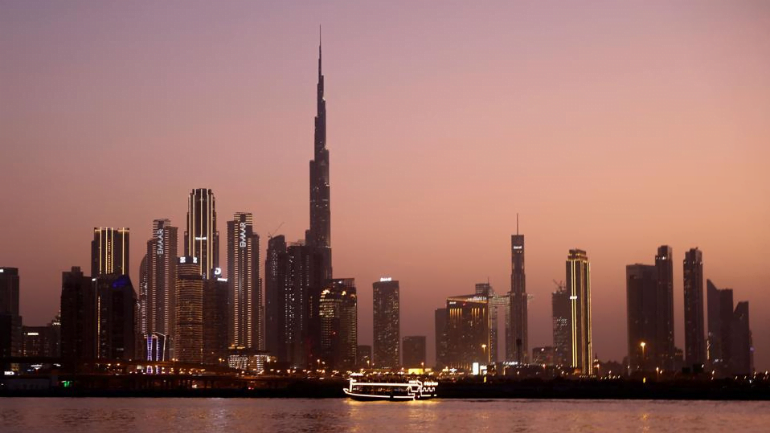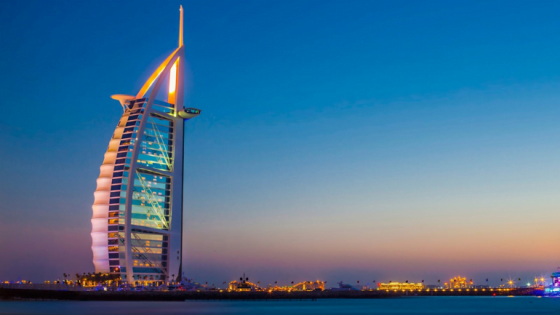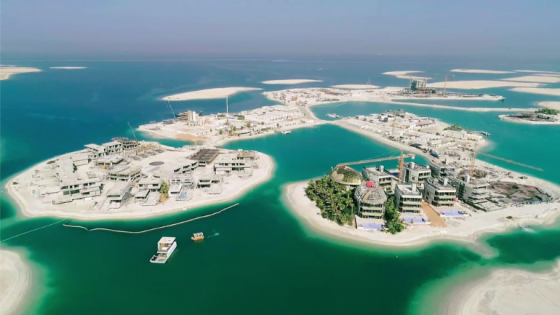Contents
United Arab Emirates weather patterns; the UAE is known for its hot, dry and subtropical climate, characterized by soaring temperatures, low rainfall, and high humidity. Understanding the weather patterns in the UAE is essential for residents and visitors alike to prepare for and cope with the harsh climate. In this article, we will delve into the various weather patterns that shape the UAE’s climate and explain how these patterns impact the region throughout the year.
UAE Weather Patterns Overview
The UAE features a desert climate patterns that can affect weather globally .The country experiences an arid desert climate, chiefly influenced by its geographical location near the Tropic of Cancer. This strategic location exposes the region to influences from both the Arabian Sea and the Rub’ al Khali desert, contributing to the unique weather patterns witnessed in the UAE.
Seasonal Temperature Variations in UAE
Summers in the UAE (July to August) are scorching, with temperatures often exceeding 40°C (104°F) and sometimes reaching up to 50°C (122°F). In contrast, winters (December and January) are relatively mild, with average temperatures ranging from 14°C (57°F) to 23°C (75°F). The transitional seasons of spring and autumn (April to November) witness moderate temperatures, making them more favorable for outdoor activities.
Read more: Climate change in UAE
Natural UAE Weather Patterns

Let’s take a closer look at term shifts in temperatures and weather patterns caused by nature and natural circumstances:
Humidity and Its Effects on UAE weather patterns
Humidity is a considerable factor shaping the weather patterns in the UAE. During the summer months, the humidity levels can be exceedingly high, making the extreme heat even more uncomfortable. The humidity arises from the warm currents originating from the Arabian Sea. However, during the winter season, humidity tends to be lower, creating a more pleasant environment.
Rainfall Patterns
Rainfall is scarce in the UAE, with the country receiving only an average of 80mm of precipitation annually. Most of the rain in the UAE falls during the winter months, particularly between November and February. Rainfall patterns in the UAE are highly unpredictable, and the lack of consistent rainfall has resulted in the development of various artificial methods for water supply, such as desalination plants
Read more: The average temperature in UAE
Seasonal Winds
UAE reflects changing global weather patterns, the country experiences periodic winds that play a significant role in affecting the climate. The most prominent wind is the Shamal, a northwesterly wind that blows across the UAE during summer, bringing dust storms and decreasing visibility. Conversely, during the winter months, the winds shift, and the country experiences a maritime breeze known as Al-Barasti, providing relief from the heat
Coastal Influences
The UAE’s coastal areas experience slightly different weather patterns compared to the inland regions. Due to the maritime influence, coastal cities such as Dubai and Abu Dhabi experience slightly cooler temperatures and higher humidity levels. This results in a milder and more pleasant climate, attracting tourists to the coastal regions throughout the year.
Read more: UAE Islands and Archipelagos
Human impact on UAE Weather Patterns

Human activities have had several impacts on changing weather patterns in the UAE. And it is even more dangerous than natural factors. Here aremost 5 uae weather patterns mainly caused by human:
Urbanization and Artificial Structures
The rapid urbanization and construction of artificial structures, such as high-rise buildings and expansive paved areas, have contributed to the phenomenon known as the “urban heat island effect.” This effect causes urban areas to be significantly warmer than surrounding rural areas, altering local weather patterns and increasing energy demand for cooling.
Air Pollution
The heavy industrial activities, vehicular emissions, and dust from construction sites have led to increased air pollution levels in the UAE. These pollutants can influence UAE weather patterns by affecting cloud formation, precipitation, and temperature. They can also contribute to haze and reduced visibility.
Increased Energy Demand
As the UAE’s population and industrial activities have grown, there has been an increased demand for energy, largely met by fossil fuel combustion. These activities release greenhouse gasses into the atmosphere, contributing to global climate change. Global warming can lead to altered weather patterns, including increased temperatures and changes in precipitation patterns.
Read more: UAE desert
Land Use Changes
The development of agriculture in the UAE has resulted in significant land use changes. Irrigation can lead to increased moisture availability, which affects UAE weather patterns, including potentially altering humidity levels and localized cloud formation.
Water Demand
The UAE’s limited freshwater resources are heavily reliant on desalination plants. These plants consume vast amounts of energy and contribute to carbon emissions. Additionally, the extraction of groundwater for agricultural purposes can lead to reduced groundwater levels and affect UAE weather patterns through changes in evaporation rates.
What is the coldest month in UAE?
January.
What is the hottest month in UAE?
July and August.
UAE weather patterns; in addition to the natural factors, It is important to note that while human activities have contributed to changes in local weather patterns in the UAE, global climate change caused by human actions on a larger scale also plays a significant role.













